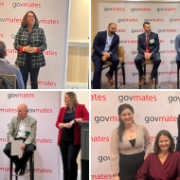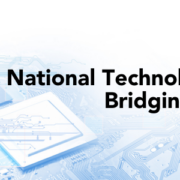For the Love of GovCon
It’s the season of love, or so we’ve been programmed to believe by the corporate folks over at Hallmark. But we embrace the season…because having Feb be only about Groundhog Day just isn’t doing it for us.
As we reflect on love, the question is what do we love about GovCon?
There are a million reasons to hate GovCon or despise it. But rarely do we speak about how the industry is much like a finicky lover, with many contradictions, and many quirks, but dang, we just can’t quit them.
It’s a study of opposites. GovCon has many contradictions where two opposite things are true at the same time. It’s a hard lover to put up with, but the rewards are great.
- Frenemies.Very few can go it alone here in the federal contracting world. So, they partner with their competition for the greater good (i.e. winning). Some companies go through teaming partners faster than they go through clean underwear. Others have marriages of convenience with several select partners that they stay true to. Whatever the strategy, it’s inevitable that you will eventually partner with a company on one bid and go against them as competition on another. We are an incestuous industry, and we don’t care who judges us for it.
- Documentation.Rarely has an industry had all its dirty business published for the world to see…by law! RFPs are available for the public to review, POCs are available, spend plans for the next 5 years for an agency, and priorities are briefed in overly reviewed, watered-down PowerPoint briefs. GSA schedules yield competition rates (never to be trusted, but it’s a starting point). Contractors report their 5-year revenue averages, their headcount, their past performance, and their capabilities (usually a nice 1-page summary…i.e. the infamous cap statement or dating profile). There is data on top of data on top of data, all for the ready.But alas, the other side of the coin. You must shift through all the data and read between the lines. What isn’t published, what isn’t obvious. The pros can shred a proposal in hours and determine if they should go after it. The pricing folks can do rate buildups on the competition. The capture managers can find money to pursue in 3 years. It’s a science and an art and no one nails it 100% of the time. But the good ones come close. They read the dating website and find the cray-cray with anger issues. They find the lovable folks and can decipher between the two. Companies that excel know not to play with those customers who are high on the hot-crazy scale, no matter what the funding.
- NewbiesOne area the US Government does a decent job of is providing resources and help to the newly established companies. The govt wants new blood in our industry. They offer excellent free resources and how-to’s with their Apex programs, the SBA website, etc. There are accelerators to join, free webinars to attend, and conferences designed for newbies. They publish their needs for all the world to see. They invite you to respond. They even tell you how to respond and what will make them happy, what makes them purr.Yet every company has the age-old problem of needing past performance to obtain new contracts. And how does one get past performance when they are newly established? Whelp, welcome newbie, as here is the harshest contradiction of them all. We want to support you, but not until you’ve been in business a few years, had some success, and proven that you aren’t just a guy/gal in their basement making stuff up. It’s the easiest industry to get into, yet one of the hardest to earn revenue from. 18+ month sales cycles, good old boy/gal network, lack of exposure to govies with money, much less money and contracting opportunities. There are a million reasons why the defense industrial base is shrinking. Much like Tinder, the government makes it easy to swipe, but so hard to find anything of substance.
- Sweet Marriage.The US government spends more money than any other consumer in the world. The contracts can be long (5, 10, even 10+ years). The government wants a long-term relationship. It wants to be married. It wants stability. It wants the industry to stay monogamous, play by the rules (FAR), and get to know it intimately. In exchange for this commitment, the govt is willing to let large contracts, worth billions of dollars.But know your place in the relationship. The minute you get crazy, the minute you start playing loose and fast with the rules, the performance, the timesheets, the profit margins, your marriage can come crashing down. It starts with earlier-than-expected than expected recompetes, negative CPARs, and the cold shoulder from the govt PM. Divorce papers are often issued in the form of a T for C. You get too crazy, and the restraining order comes as a debarment. This relationship is dead. You are past marriage counseling, past the point of no return.
GovCon is the cruelest mistress of them all, but we all know, we can’t quit them.
















